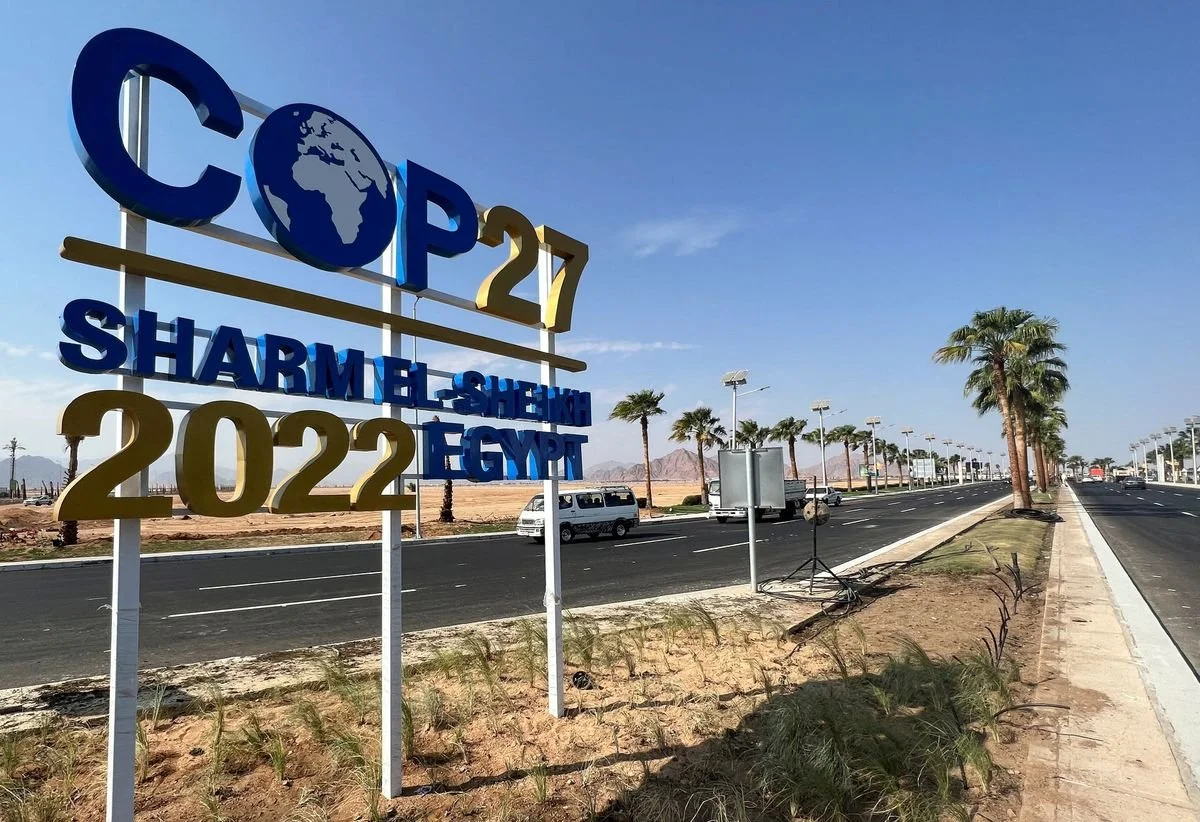COP27: Climate Change and Aquatic Animal Welfare - What is the Connection?
Photo: REUTERS
Current climate change mitigation and adaptation policies focus mainly on the impact on humans. However, in reality the climate crisis impacts all living beings, including aquatic animals. This is why the Aquatic Life Institute will be attending COP27 in November to call on global leaders to take aquatic animals and their welfare into consideration in climate change policy discussions.
What is COP27 and why is it important?
As the climate crisis intensifies, global leaders and other stakeholders will convene this year in Sharm el-Sheikh, Egypt from November 7 to 18 to discuss climate change mitigation and adaptation solutions and strategies. This is critically important as the latest science shows that climate change is moving much faster than expected, pushing ecosystems and communities to the brink.
There will also be themed days for focused talks and announcements on issues such as gender, agriculture, water and biodiversity. These will be important for interested stakeholders to discuss specific topics important to them, announce commitments, and draw attention to important issues that have been neglected by COP.
During COP and especially on Water Day and Biodiversity Day, we plan to draw attention on one highly neglected issue: the importance of aquatic animal welfare and how inextricably linked it is to climate change and sustainable development.
What is the connection between climate change and aquatic animal welfare?
While fishing and fish farming are often not included in climate change discussions, they are both highly relevant to climate change, food systems, and biodiversity.
Aquaculture will be increasingly affected by climate change in many ways, for example, through increasing ocean acidity, dissolved oxygen, and water temperature, as well as more intense and unpredictable weather events, such as hurricanes or heavy rainfall that may cause infrastructure damage, leading to high probability of fish escapes.
Additionally, we should expect to see an increase in run-off of fertilizers and pollutants such as pesticides, herbicides, and trace metals into marine and inland aquaculture operations as a result of these events. If not adequately addressed, this could pose serious health and welfare risks to farmed fish and public health generally.
Aquaculture can also impact the climate. First, significant emissions can result from energy used for recirculation or other purposes. Second, emissions are also embedded in the feed used for farmed fish. Around 20% (by tonnage) of the world’s commercially-caught fish are turned into feed for farmed animals, including for farmed fish. This translates to around 1.2 trillion individual animals. If shifted away from fishmeal/fish oil production, it could play a crucial role in providing high-quality nutrition to food-insecure regions of the world, most notably in communities and marginalized groups (e.g. women) that rely on local, artisanally-caught fish for livelihoods and survival. And just as important, a reduction of wild-caught fish as feed will help reduce emissions from capture fisheries, directly contributing to climate change mitigation.
In capture fisheries, impacts on climate include emissions from fishing vessels, direct disturbance to ocean sediments, and loss of carbon sequestration capacity due to the removal of aquatic animals. A particularly harmful fishing method is bottom trawling, which causes overfishing and releases massive amounts of carbon from the seabed. On the ecosystem level, it can displace entire benthic communities through destroying their habitat.
Industrial fishing also negatively impacts aquatic animal welfare. Current capture, retrieval, handling and slaughter practices in capture fisheries cause significant untold suffering of aquatic animals. In fact, the seafood sector is the only major food-producing industry that does not take animal welfare into account. Annually, 100 billion fishes are farmed while 2 to 3 trillion fishes are caught. This is 35x more than the number of farmed land animals. Not only are target species affected by low-welfare practices (e.g. crushing injuries in nets, mutilation on board, slaughter without stunning, etc.) but so are non-target species (e.g. marine mammals and seabirds).
Further, fishing gear that has been abandoned or lost at sea continues to catch and kill an enormous number of aquatic animals each year while polluting our oceans with plastics, posing major threats to human health, global food security, and marine ecosystem health. Already, nearly 90% of the world’s fish populations are fully exploited, overexploited or depleted. An animal-welfare approach to aquaculture and capture fisheries can help improve the health of aquatic animals, humans and the climate.
What can we do to support aquatic animals at COP27?
The inclusion of aquatic animal welfare in climate change mitigation and adaptation strategies is essential in our global efforts to meet the Sustainable Development Goals.
One way to support is to amplify our call to action by re-sharing our post on social media:
Another way to support aquatic animals is to reduce your consumption of seafood, especially farmed carnivorous species (e.g. salmon), which requires the equivalent of 120 anchovies to be brought to slaughter weight. Consumers have and should definitely use their purchasing power to make a statement. One thing to be aware of is that the UN is increasingly pushing for “blue foods” to replace livestock farming as a sustainable alternative meat source. Given all of the concerns mentioned above, we do not believe that aquatic foods make an ethical nor sustainable substitute.
Finally, you can support our work. Our team works tirelessly to advance aquatic animal welfare globally and it wouldn’t be possible without our generous donors. In fact, our work in best welfare practices in capture fisheries was recently endorsed by the UN Ocean Action Decade, marking an important milestone. Your contribution will help ensure that such efforts continue going forward.


